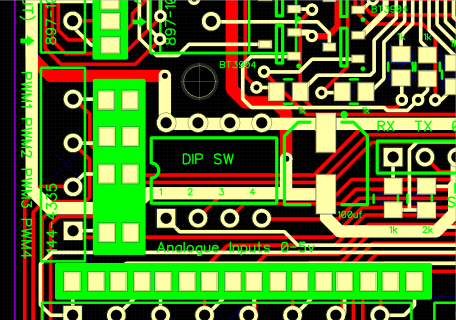Vague title I know
I have built many projects over the years.... I mean, LOADS. And they all work fine. I take much longer than someone who can work out the correct method immediately, but I get there in the end.
Without Google, I would be lost. If I need a circuit or assistance, someone will have done something similar before and I can nearly always adapt it.
Saying that, I will always get the datasheets for particular IC's and 'try' to get my head around it and understand what I am actually doing.
Take my current project. Teensy 3.2, with x MCP23017 multiplexers attached over I2C.
I have 16x MOCD208 Opto-isolators connected to one of the MCP23017's as inputs. Multiplexers running at 5v.
I have 16x BC548 transistors connected to the other as outputs. It all works fine.
To calculate the resistors I needed for that...... I stabbed in the dark, going from past experience. I have no clue on how to actually work them out.
The transistors have a 1k from the MCP23017 to the base, and they seems to switch fine. 1k is my default 'base' resistor value.
The Opto-isolators have a 4k7 on the input, which appears to give me a range of around 5v-24v DC input. The output of the opto-isolator (running on 3.3v) goes through a 220R to the MCP23017. Held low with a 10k.
Again... seems to work fine.
I chose the 220R because 1k seemed a little bit 'borderline' on the reliability of the switching.
I would love to understand how to calculate this stuff, but my old brain just cannot grasp it. Is that a terrible way to go forward? It's not like it's my living.
One thing I have learned...... never buy just one of anything
I have built many projects over the years.... I mean, LOADS. And they all work fine. I take much longer than someone who can work out the correct method immediately, but I get there in the end.
Without Google, I would be lost. If I need a circuit or assistance, someone will have done something similar before and I can nearly always adapt it.
Saying that, I will always get the datasheets for particular IC's and 'try' to get my head around it and understand what I am actually doing.
Take my current project. Teensy 3.2, with x MCP23017 multiplexers attached over I2C.
I have 16x MOCD208 Opto-isolators connected to one of the MCP23017's as inputs. Multiplexers running at 5v.
I have 16x BC548 transistors connected to the other as outputs. It all works fine.
To calculate the resistors I needed for that...... I stabbed in the dark, going from past experience. I have no clue on how to actually work them out.
The transistors have a 1k from the MCP23017 to the base, and they seems to switch fine. 1k is my default 'base' resistor value.
The Opto-isolators have a 4k7 on the input, which appears to give me a range of around 5v-24v DC input. The output of the opto-isolator (running on 3.3v) goes through a 220R to the MCP23017. Held low with a 10k.
Again... seems to work fine.
I chose the 220R because 1k seemed a little bit 'borderline' on the reliability of the switching.
I would love to understand how to calculate this stuff, but my old brain just cannot grasp it. Is that a terrible way to go forward? It's not like it's my living.
One thing I have learned...... never buy just one of anything


